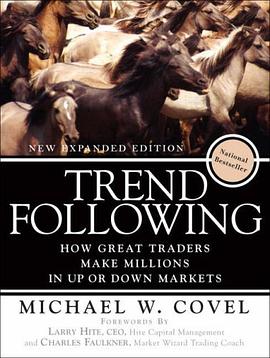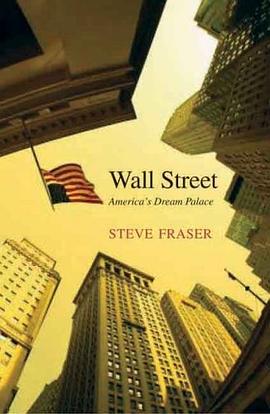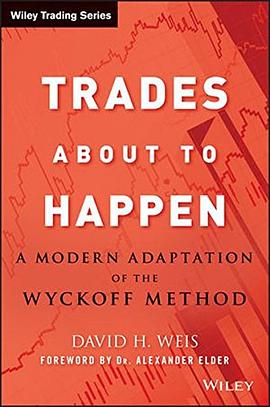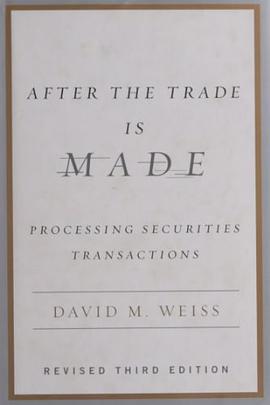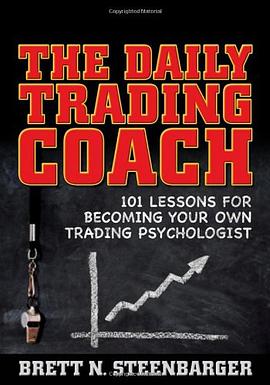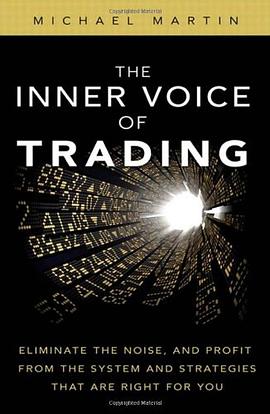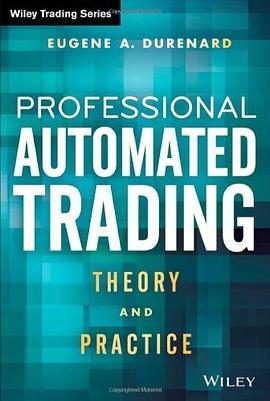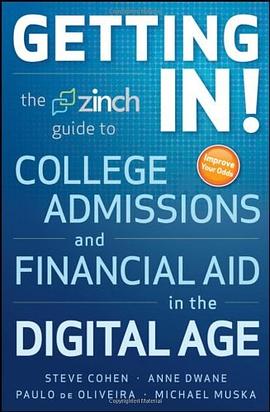
"The best college advice from the smartest experts we work with."Stephen Rudin, MD, Founder and President, Individual U., LLC "Constructive, practical, and comprehensible advice to anxious high school students."Tom Parker, Dean of Admission, Amherst College "No one brings as much knowledge to the college admission process [as] Mike Muska."Michael Goldberger, Director of Athletics and Former Director of Admission, Brown University Where to go, how to get in, and how to pay for itfrom the college admissions experts. Getting In is your college admissions how-to guide, written by experts with insider guidance on everything you need to know to get into the college of your dreams. About the Book The truth about college admissions What you need to knowbefore you apply Behind the scenes ofcollege admissions Choosing the right(vs. "best") college Your application strategy The Hook: Putting it all together Athletic recruiting andcollege admission Paying for college Thriving (not just surviving)during the long wait Case studies andsample essays
From the Book: The Top 10 Myths of College Admissions
1. The top colleges are looking for well-rounded applicants.
The top colleges aren’t looking for well-rounded kids. They’re looking for a well-rounded class. Every school has institutional needs it must fulfill. That means they need scholars for every academic department, athletes for each team, performers for every arts group, and even some “really nice” kids to organize hall-hockey.
So what does that mean for you? You have assets; you have something the college wants to make up that well-rounded class. How you identify those assets—in the context of the school’s needs— is what we refer to as positioning. How you communicate your positioning becomes your packaging.
Importantly, positioning and packaging become as important to the harried admission officer as they are to you. Giving that hardworking person an easy “handle” or “hook” and showcasing your strengths helps the college and helps you.
2. The more extracurriculars, the better.
Once you understand that top colleges are looking for the wellrounded class rather than kid, you’ll recognize that admission officers don’t really care about a student having a laundry list of extracurricular activities. They would much rather see a student who excelled at one or two activities and who attained a leadership position in just one. And even better, admission officers love kids who did surprisingly well in those pursuits. Find your passion and let the admission officer find it in you as well.
3. Great extracurriculars and talents are the keys to getting in.
FUHGETABOUTIT! What really count are your grades and SAT/ ACT scores. Only after you qualify on those two measures—grades and test scores—does everything else come into play. Extracurricular activities, athletic skill, musical, artistic, or theatrical talent, background, overcoming unusual hardship, personality, and the institutional needs of the college in a given year all come into play. But to make it into the admissions sweepstakes you’ve got to have an academic “ticket.”
4. Admission officers secretly enjoy rejecting all those applicants.
No, they really don’t. Most admission officers are aware that a majority of candidates are qualified to be at their college, and they don’t relish denying that opportunity to good kids. But every selective college has more qualified applicants than it can possibly admit—and thus admission folks will be looking for reasons to deny applicants as well as accept them. So, they quickly dismiss applications that don’t pass muster. The easiest to reject are Those with stupid mistakes on their application: misspellings, essay questions answered thoughtlessly or not at all, or pieces of the application left blank or missing altogether. Those in which applicants come across as arrogant, grade-obsessed, or narrow pre-professionals. Applicants who fail to show genuine interest in that college.
5. By the time I apply, the die is cast—and there’s not a lot I can do to improve my chances.
It is difficult to overcome a weak or spotty academic record. But if you are in the academically acceptable (but not strong) zone, there are things you can do to better your odds. The fact is that most applicants fall into a middle group of qualified—but not “killer”— applicants. This means that in committee sessions, the admission officers like having a clear hook or positioning for each student. It helps to categorize, assess, and justify accepting or denying an applicant: “Another grade-obsessed pre-med from a high-powered suburban New Jersey high school.” Or, “Interesting, bright Mendocino, California, flower-child home-schooled by organic farmer parents.” (Who would you rather hang out with at college?) So, while not having a solid academic record will make your chances of admission to a good school more difficult, it won’t make it impossible.
6. Get as many recommendations and letters of reference as possible.
There is an expression in the admissions world: “The thicker the folder, the thicker the kid.”
Many parents think they should secure extra recommendations for their student from business leaders, politicians, or people with connections to the college. Bad idea! Unless the recommender really knows the applicant—preferably through a work or academic experience—don’t do it. A vague or uninformed reference is worse than no reference at all. An application folder stuffed with letters of recommendation from “high-powered” references is not appreciated by any admission officer. They are often vague and quickly recognized as favors being done for the applicant’s parents. And they backfire with an admission officer burning the midnight oil in order to get through her nightly quota of applications.
This is also true for your teacher, counselor, and employer references as well. Make sure they come from people who know you well and who can write something thoughtful and meaningful about you. You don’t want recommendations that are well-meaning but vague or filled with generalizations—because you really didn’t take a course from, or work for, that person.
7. Send lots of stuff to the admission office to prove how interested you are.
Just as you shouldn’t inundate the admission offi ce with extraneous recommendations, think long and hard if you are submitting examples of your work to the admission committee. Whatever you send them (special projects, art, photos, awards, etc.) better be pretty impressive or unique.
In one illustrative case, a young man sent the admission offi ce an Excel spreadsheet listing all the movies he had ever seen—complete with each movie’s director, actors, and notable crew members. He was trying to prove how interested he was in the entertainment industry. But, rather than being impressive, it contributed to a picture of the applicant as a grind. This became especially apparent as he made no effort to get involved with the drama club or an independent filmmaking project, or even to volunteer at a local film festival.
As an alternative, think of how to use technology to your benefit. Providing a link to your website, a YouTube video, or a wellproduced short DVD gives an interested admission officer an opportunity to investigate you further without weighing down your file.
8. It’s getting harder than ever to get admitted to a top college.
Many educators and journalists said that 2010 was the toughest ever to get into a top college. This was the result of three factors: the largest high school graduating class in history, seniors submitting more applications to more colleges, and a larger number of international kids interested in top name colleges. Fortunately, the number of kids in the senior class will now decline for each of the next few years. Add to that the weak economy and families deciding on less expensive state and community colleges, and the combination may ease the severe admissions pressure just a bit. But don’t expect the competition for getting into a top college to change dramatically. The value proposition of “name” schools will keep admissions formidable for years to come.
But believe it or not, it’s still a buyer’s market—if you are willing to do some research and not just focus on the obvious popular choices in “top” colleges. For all the hype and stress of college admissions, far more schools accept more applicants than they reject—even some of the name schools.
That doesn’t mean the competition isn’t tough; it is. But once you get beyond the top 50 or so colleges and universities, the acceptance rate is typically above 50%. Admission is still a daunting prospect, but smart targeting and a good application should give you a fighting chance of getting in.
9. Admission statistics don’t lie.
As Mark Twain once wrote, “There are three types of lies: lies, damn lies, and statistics.” Admission statistics don’t lie—too much. But they can be misleading.
For example, what’s the number-one most selective institution of higher learning in the country? Did you guess Harvard? Stanford? Princeton? Sorry, you’re wrong. The answer is the Curtis Institute of Music. In the fall of 2007, Curtis had the lowest acceptance rate in the country—only 4.8%. That is far more selective than Harvard’s 7%, Stanford’s 8%, or Princeton’s 10%. Why? Because Curtis is a small specialty school that attracts many of the nation’s top musicians—those who are looking for music-oriented education. So kids self-select, and admission is very competitive.
The raw numbers of admission are useful—up to a point. Believe it or not, more than a few colleges try to encourage applications from students who don’t really have a chance of getting in—in order to reject them. Why? Because a college’s selectivity rate improves its standing in the U.S. News & World Report “Best Colleges” rankings. It’s a little sick, but it’s a fact.
Throughout this book we’ll focus on various statistics—SAT/ACT scores in the mid-percentile ranks, yield numbers, early admission acceptance rates versus regular admission, legacy admissions. We’ll explain each one in the appropriate context.
But just remember: the numbers don’t lie, but they don’t necessarily tell the whole truth either.
10. Kids from private, prep, or high-powered public schools always do better in the admission sweepstakes.
Not necessarily. Schools like Harvard, Stanford, Yale, Brown, and the like see scores of applicants from good public school systems. They also receive lots of applications from notable private and boarding schools nationwide. In fact, applying from one of those “name” places can actually be a disadvantage. That’s because so many applicants come every year from these high-powered towns and schools that it makes each candidate seem less unique. For example, it’s always refreshing to admission gatekeepers to see applicants from rural areas. In fact, all other things being equal, a kid from a small-town school no one has ever heard of will have a better chance of getting in than a kid from a well-known high school. That well-known or high-powered school may routinely have 10 or more kids all applying to the same college. So not only are they vying for acceptance against the national applicant pool, they’re competing against their classmates! There is one downside to the small, unfamiliar, rural applicant’s high school: the admission officer may not know much about the rural school’s rigor or grading policy but is well aware of the well-known school’s standards.
Now, there’s not a lot you can do about where you go to school— unless you are reading this early in your high school career and are ready to move to Montana—so you may as well avoid obsessing about things you can’t control. Instead, focus on how to improve your chances with the factors you can control. That’s what we discuss throughout the book. And if you are applying from a high school that’s never before sent anyone to the college of your dreams, we’ll tell you how to turn that into an asset as well.
From the Book: 10 Things Colleges Don’t Want You to Know
1. It is a buyer’s market.
Believe it or not, you are in a better position than you realize. That doesn’t mean you can play Yale against Princeton, unless you are a phenomenal applicant; or USC against UCLA, if you are a very good one. But only about 65 colleges nationwide reject more applicants than they accept. Among the remainder, there are still many excellent and well-regarded institutions. And this is the group you want to focus on in terms of your core school choices (vs. your reaches).
2. Attracting good applicants is a competitive business— for the colleges.
Get on a college’s radar screen early and enable them to come after you. There are a number of ways to accomplish that—such as connecting with a particular professor about her work and demonstrating your own interest and abilities in the area. The easiest way is to utilize Zinch. (Yes, this is a plug for Zinch; we partnered with them because we think what they’re doing is smart and effective.)
3. More than a few colleges cook the books to achieve a better “ranking.”
The U.S. News & World Report “Best Colleges” rankings drive university administrators nuts. As a result, more than a few have been known to misrepresent the data that they provide to the magazine for its calculations. (The most recent involved a well-known university in South Carolina. They fudged the number of small classes offered by the university. The result pushed them from a ranking of 38 to 22.) If the rankings are important to you, make sure you do a Google search to see if there have been any negative stories suggesting less-than-kosher behavior by the colleges you’re interested in.
4. Don’t get snookered by the rankings.
First, the magazine rankings are often very misleading. They reflect a formula that purports to be objective. But objective criteria like class size, student-faculty ratio, alumni giving, and the number of volumes in the library can’t capture the subtle but more important factors that determine just a how good a college really is: the quality of the faculty, the school’s location, its physical attributes, and, probably most important—and elusive—the happiness of the student body. Second, there are lots of sub-lists that allow colleges to tout their rankings. By now all colleges know how to spin their numbers to make things sound better. Third, you should ask yourself what value the rankings have to you? If it is simply “brand” recognition, that’s OK; but recognize it for what it is. The important thing is to be sure to take any of the rankings with healthy doses of salt.
5. Colleges have personalities.
No one would ever confuse Brown with Princeton. Or Georgetown with Wesleyan. Rankings don’t reflect personality, and personality is often far more important to a student ultimately being happy on a campus. Where you’re happy, you’ll excel—academically and otherwise. So do your research. And after you get your fat envelopes, don’t enroll at a “name” college that doesn’t really excite you. You’re probably better off at a school that has less cache but fits you better.
6. Stereotypes are sometimes true.
Often the rumors about a college campus are indeed on target. One well-known Ivy is known as “the gay Ivy.” A major Midwest state college is reputed to be populated largely by kids from Long Island. How accurate are these stereotypes? Often more on target than a school wants to admit. If you are concerned that these stories paint a picture of a place where you may not be happy, it is worth your time and effort to track down their veracity. After all, West Point and Annapolis offer great educations—but they are certainly not for everyone.
7. Colleges play up what you “think” is important.
For example, colleges always talk about their terrific student-faculty ratio. Unfortunately, that number is largely misleading. So are measurements of the percentage of classes with fewer than 20 students. Both of these measures are typically included in various guidebooks and rankings, and both are good examples of how colleges “cook the books.”
At most schools, you’ll probably have to take some large lecture classes—and you shouldn’t worry too much about them in your freshman year. They are part of the college experience. More important are questions like these: How many upper-level undergraduate courses are taught by full professors? (One very prestigious Ivy is known for elusive faculty who tend to stick to research and grad students.) Are they available to all undergraduates or reserved for students in a particular major? Similarly, how accessible are small seminar courses to undergrads? The point? Don’t get snookered by—or hung up on—college-reported statistics.
8. Every school has weird traditions.
Some are cute; others are a bit bizarre. Painting “A” mountain before the fi rst football game at Arizona State is a big tradition at ASU. Unfortunately, students do it in the 110-degree heat of late August. Alternatively, at Bennington, there is a tradition of scheduling “cross-dressing night” on the first evening of Parents’ Weekend. The students seem to love it, but more than a few visiting parents are in shock. Be sure to explore some of these more quaint traditions, and think about whether you’d be comfortable participating in them.
9. Colleges are businesses.
As we said earlier, most colleges are nonprofi t institutions, but they do operate on a profit-and-loss basis. And in tough economic cycles, it is very useful to see what a particular college has cut back on—or what fees they’ve increased. Those choices will often give you an insight into what the school considers most valuable.
10. Colleges are political institutions.
They have powerful constituencies that must be attended to—the faculty, the alumni, the surrounding community, sometimes the state legislature, and occasionally the church, among others. When you look at a college, keep these constituencies in mind, and think about how they influence the college.
具體描述
讀後感
評分
評分
評分
評分
用戶評價
相關圖書
本站所有內容均為互聯網搜索引擎提供的公開搜索信息,本站不存儲任何數據與內容,任何內容與數據均與本站無關,如有需要請聯繫相關搜索引擎包括但不限於百度,google,bing,sogou 等
© 2025 qciss.net All Rights Reserved. 小哈圖書下載中心 版权所有



